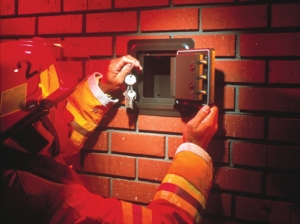We Take Carbon Monoxide Alarm Monitoring Seriously
The Central Station Alarm Association published a carbon monoxide alarm response protocol in 2008. Many alarm companies treat carbon monoxide as just another alarm signal, however, because of the deadly effects of carbon monoxide and how quickly this silent killer can cause major harm to people, families and especially children, Hoosier Security and CMS have opted to follow those response standards published for carbon monoxide alarm response. This decision was made in order to provide the highest level of life-saving service to our Indiana customers. As we all know, there is always a trade-off, and this decision also means that if customers do not respond to the alarm company central station calls, the Fire Department will assume that there may be people inside the premises who are unconscious. Please remember to answer the calls from the central station, and commit your account number and passwords to memory!
Any system monitored by Hoosier Security in Indiana will be monitored in the same fashion, according to the CSAA’s Carbon Monoxide Supervising Station’s Response Standard to help provide the highest level of safety for our customers. The monitoring standard can be read by clicking the following link, and we encourage all Hoosier Security Alarm customers to read it and get to know it:
http://www.csaaul.org/2008_ANSI_CSAA_CS_CO.pdf
All Carbon Monoxide alarms will require FD dispatch for both residential and
commercial sites.
When the central station reaches the premises, we will advise the subscriber to leave the
premises and move to fresh air. The subscriber will be advised not to return to
the premises until the FD has arrived and cleared the location.
The downside to this is that if you have a Carbon Monoxide alarm in your home and the central station cannot reach you, the fire department will assume you are unconscious inside your home and will take the appropriate action for that assumption.














